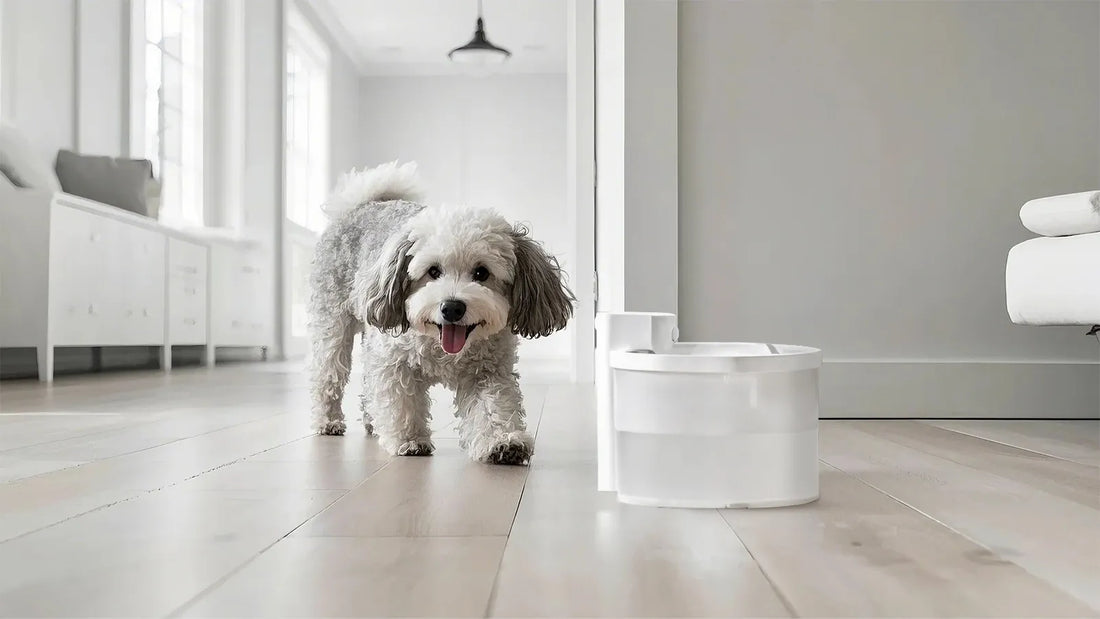Have you ever noticed your dog exhibiting peculiar behavior around its food bowl? Perhaps it growls, guards, or becomes overly anxious when mealtime approaches. This phenomenon, known as a food bowl conditioned dog, is more common than you might think. Understanding this behavior is crucial for fostering a harmonious relationship with your furry friend. Let’s dive deep into what it means, why it happens, and how you can address it.
What is a Food Bowl Conditioned Dog?
A food bowl conditioned dog is a canine that has developed specific behaviors or responses associated with its food bowl. These behaviors can range from mild anxiety to aggressive guarding. The conditioning occurs when a dog associates its food bowl with certain triggers, such as the presence of other animals, specific sounds, or even the approach of its owner. Over time, these associations become ingrained, leading to predictable and often problematic behaviors.
Common Signs of Food Bowl Conditioning
Recognizing the signs of food bowl conditioning is the first step toward addressing the issue. Some common behaviors include:
- Growling or snapping when approached during meals
- Guarding the food bowl or surrounding area
- Eating too quickly or showing signs of stress while eating
- Refusing to eat unless certain conditions are met
These behaviors can escalate if left unaddressed, potentially leading to more severe aggression or anxiety.
Why Does Food Bowl Conditioning Happen?
Food bowl conditioning can stem from various factors, including past experiences, environmental influences, and even genetics. Here are some key reasons why this behavior develops:
Past Trauma or Competition
Dogs that have experienced food scarcity or competition in the past are more likely to develop food bowl conditioning. For example, a dog that was previously in a shelter or lived with multiple animals may have had to compete for food, leading to guarding behaviors.
Lack of Proper Training
In some cases, food bowl conditioning arises from a lack of early training. Puppies that are not taught to share or be comfortable around their food bowls may develop possessive tendencies as they grow older.
Environmental Triggers
Certain environmental factors, such as the presence of other pets or loud noises during mealtime, can contribute to food bowl conditioning. These triggers can create a sense of insecurity or urgency around eating.
The Impact of Food Bowl Conditioning on Your Dog
Food bowl conditioning doesn’t just affect your dog’s behavior—it can also impact its overall well-being. Dogs that are stressed or anxious during mealtime may experience digestive issues, weight fluctuations, or even behavioral problems outside of feeding time. Additionally, aggressive behaviors can strain the bond between you and your pet, making it essential to address the issue promptly.
How to Address Food Bowl Conditioning
Fortunately, food bowl conditioning can be managed with patience, consistency, and the right approach. Here are some practical strategies to help your dog overcome this behavior:
Create a Calm Feeding Environment
Ensure that your dog’s feeding area is quiet and free from distractions. This can help reduce anxiety and create a more positive association with mealtime.
Practice Positive Reinforcement
Reward your dog for calm and non-possessive behavior around its food bowl. Use treats, praise, or affection to reinforce positive actions, such as allowing you to approach or touch the bowl.
Gradual Desensitization
If your dog exhibits guarding behaviors, try gradually desensitizing it to your presence during meals. Start by standing at a distance while your dog eats, then slowly move closer over time. This process helps your dog feel more comfortable and less threatened.
Implement Structured Feeding Routines
Establishing a consistent feeding schedule can help reduce anxiety and create a sense of predictability for your dog. Stick to specific times and locations for meals to reinforce a routine.
Seek Professional Help if Needed
In severe cases, it may be necessary to consult a professional dog trainer or behaviorist. These experts can provide tailored guidance and techniques to address food bowl conditioning effectively.
Preventing Food Bowl Conditioning in Puppies
Prevention is always better than cure. If you have a puppy, take proactive steps to prevent food bowl conditioning from developing:
- Teach your puppy to share and be comfortable with handling its food bowl
- Introduce positive associations with mealtime, such as gentle petting or verbal praise
- Avoid creating competition or stress around food
By instilling these habits early on, you can help your puppy grow into a well-adjusted and confident adult dog.
The Role of Nutrition in Food Bowl Conditioning
While behavior plays a significant role in food bowl conditioning, nutrition also matters. A well-balanced diet can contribute to your dog’s overall health and reduce stress-related behaviors. Ensure that your dog’s meals are nutritious and satisfying, as hunger or dietary deficiencies can exacerbate anxiety or aggression.
Building Trust and Strengthening Your Bond
Addressing food bowl conditioning is not just about modifying behavior—it’s also about building trust and strengthening your bond with your dog. By approaching the issue with patience and understanding, you can create a more positive and secure environment for your pet. Remember, every dog is unique, and progress may take time. Celebrate small victories and remain consistent in your efforts.
Food bowl conditioning is a complex behavior that requires attention and care. By understanding its causes and implementing effective strategies, you can help your dog overcome this challenge and enjoy a more relaxed and fulfilling mealtime experience. Start today, and watch as your furry companion transforms into a happier and more confident version of itself!

![[🎃Halloween Sale]UAHPET Stainless Steel Self-Cleaning Cat Litter Box](http://www.uahpet.com/cdn/shop/files/1-cat-litter-box.jpg?v=1759128420&width=1600)












